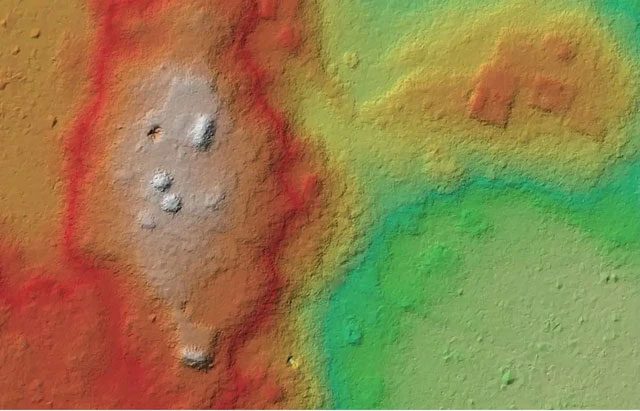A spectacular Maya “ghost” stretching up to 18 kilometers with many grand details has just been discovered in Western Yucatan, Mexico.
Like most of the Maya “ghosts” that have been uncovered in Mexico, this structure was discovered using LiDAR. This remote sensing technology uses laser beams to locate hidden structures obscured by modern terrain after centuries of neglect.

Maya ‘ghosts’ hidden by modern terrain revealed through LiDAR imagery – (Photo: INAH)
The structure is a type of road known as “sacbé” characteristic of the Maya civilization. It was built to connect temples, plazas, and groups of structures in ceremonial centers, or used as a “highway” linking cities.
Sacbé can be seen as a magnificent, astounding version of modern roads.
Researchers from Mexico’s National Institute of Anthropology and History (INAH) report that the recently discovered Maya “ghost” is an 18-kilometer-long sacbé connecting the ancient cities of Uxmal and Kabah.
This area is now part of the Puuc region in the western part of modern-day Yucatan, Mexico.
According to Heritage Daily, the sacbé linking Uxmal and Kabah is 5 meters wide, featuring grand arches built at each end.
Not only does this structure showcase the architectural and construction skills of the Maya, described as “timeless“, but it also serves as evidence of robust trade activities between these two once-great cities of the Maya Empire.
The era of this ancient “highway” bustling with travelers was approximately between 700 and 950 AD.
The two mentioned cities share similar architectural features in the Puuc Maya style, one of the iconic symbols being the double-headed serpent intertwined, reminiscent of the rain god Chaac’s mask in Maya beliefs.




















































